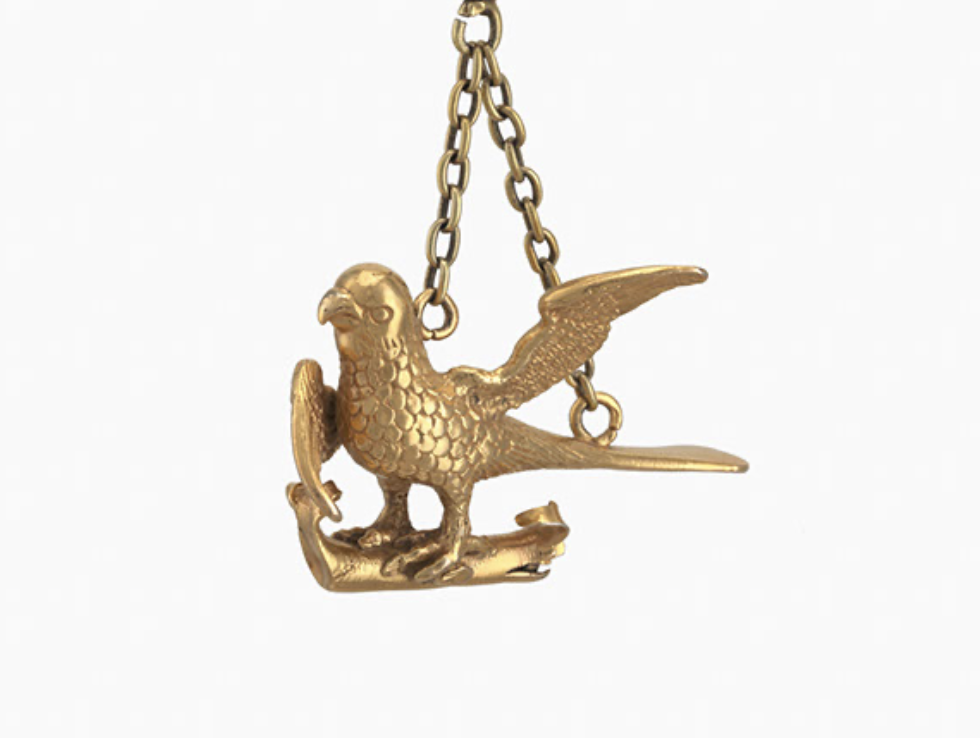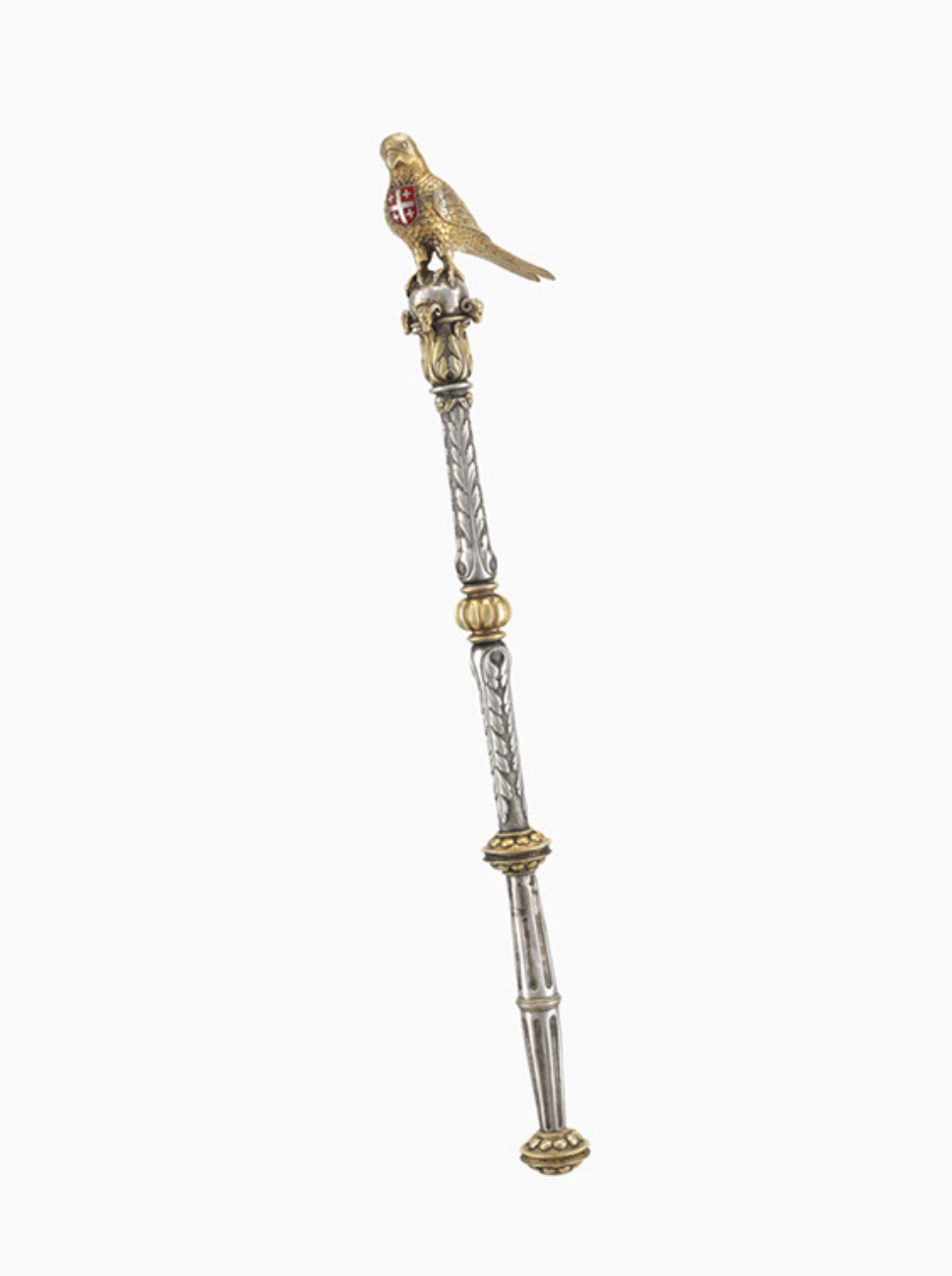Silverware...
...our inventory
There is still an inventory of 1556. It contains a number of interesting pieces of jewelry, the first five items of which read as follows:
- (1) ‘First a silver gilded collar with a parrot hanging from it, with Saint Sebastian standing in a pavilion, all in gilt silver, weighing 5.5 marks trooic (approx. 1.1 kg);
- (2) So also a silver parrot, standing on a silver stake, which the king of honor carries in the hand, weighing eleven ounces and five angels (approx. 346 g);
- (3) So also a silver gilded parrot, standing on a branch with open wings, which the king of honor holds with him and carries it daily, weighing 4.5 ounces (approx. 138.5 gr);
- (4) So also a silver rod, which the bailiff carries on the day of the shooting, Holy Blood Day and some other days, weighing 18 ounces and 3 angels (approx. 558 gr);
- (5) Item two more silver arrows, which the knights carry in their hand before the king, weighing together 13 ounces and 5 angels (each about 200 g).’
The oldest civil silver in Bruges?
The King’s Collar (1) was made in 1467 by a certain Rijcquart for the price of 11 lb. 16 s. 6 d. gr. However, no trace can be found of the creation of the sirescepter (2) and the bailiff rod (4) in the accounts dating back to 1454. Based on the analysis of the inventories, it must rather be concluded that they are from the second half at the earliest of the 15th century. The king bird or parrot (3) dates back to 1469 and is still preserved. The maker is silversmith Antheunis Labee, who joined the guild in 1462. We also know the date of manufacture of the arrows of the knights of Saint Sebastian (5), namely 1455 when various silver prizes are melted down to make them.


A century later
In the painting by Antoine Eeckoute from 1657, however, only the sirescepter and the “daily” king bird are depicted.
Based on an expert art-historical analysis, the sirescepter can be dated as from around 1520-1530.
The other silver had been confiscated by the city magistrate in 1578 to finance the wars during the religion troubles. The valuable items that were handed in ended up inexorably in the melting pot, which resulted in the fact that nowadays little gold and silver work dating from before 1578 can be found in Bruges.
The Bailiff's Rod
A new, still existing bailiff’s rod was made in 1609 by the Bruges silversmith Cornelis De Cuyninck, recognizable by the mark, a lily flower.
On July 18, 1656, the Duke of Gloucester, brother of the English King Charles II, donated a 68 cm silver arrow to the guild, also preserved.
Finally, in 1717, the captains wife had a beautiful pointer made (serving to indicate the impact of the arrows), with a silver disc bearing the coats of arms of the guild on one side and those of the de Grass family on the other side.

